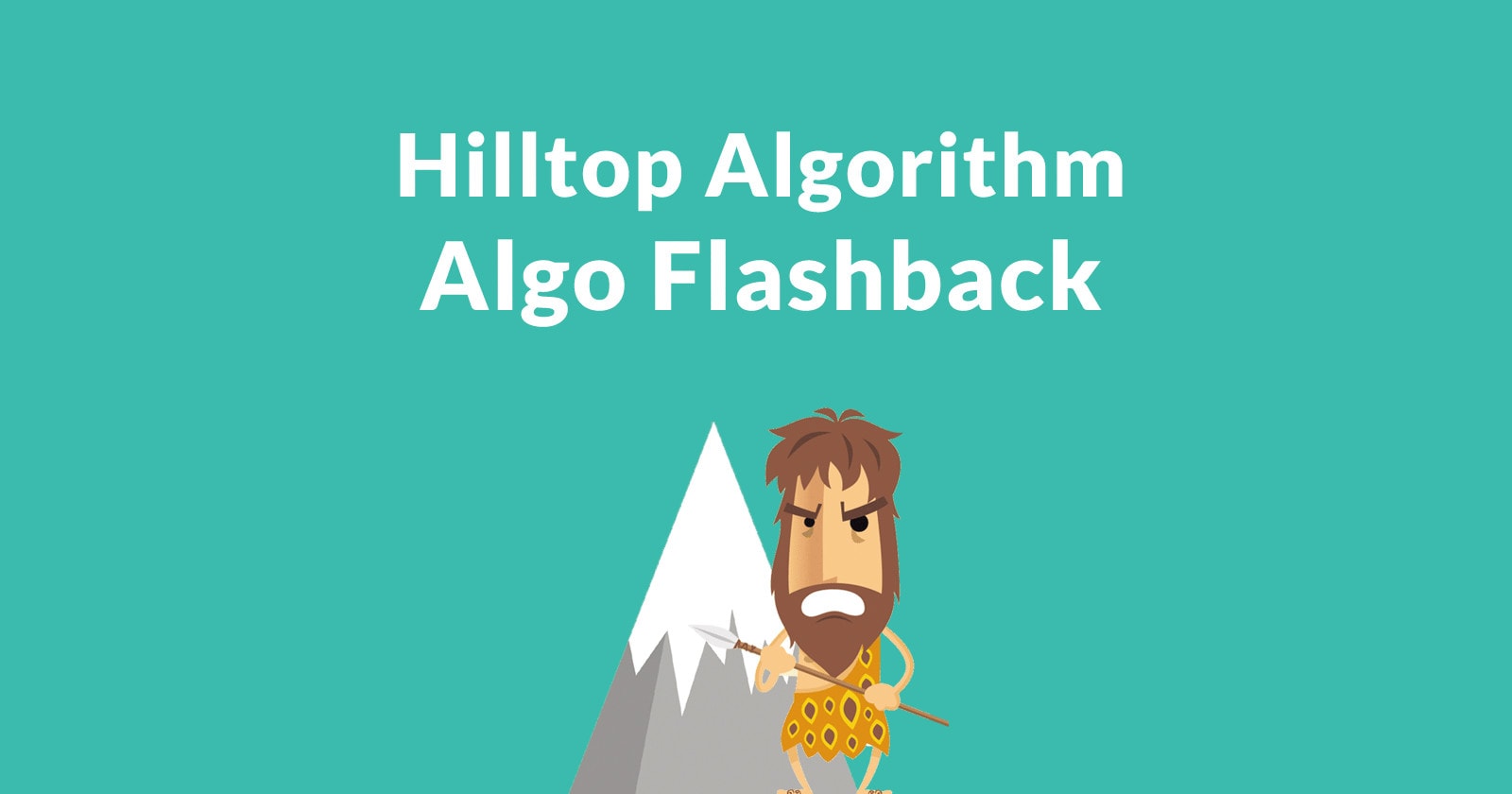The Hilltop Algorithm is an important search engine algorithm that was adopted by Google in 2003. The Hilltop Algorithm influenced how SEO was practiced in 2004 and the influence continues today. As a web professional, it’s important to understand how the Hilltop Algorithm influenced SEO in order to build a strong foundation for understanding SEO today.
A Description of the Hilltop Algorithm
The purpose of Hilltop Algorithm was to identify authoritative web pages to rank. It describes a system that worked alongside of PageRank to identify expert and authoritative web pages.
The way Hilltop identified authoritative web pages to rank was by first identifying expert pages. Expert pages were pages specific to a topic and that linked out to many other sites.
The goal was to first identify expert pages. From there Google could identify high quality sites to rank.
Here is how the Hilltop Algorithm paper describes it:
“Our approach is based on the same assumptions as the other connectivity algorithms, namely that the number and quality of the sources referring to a page are a good measure of the page’s quality. The key difference consists in the fact that we are only considering “expert” sources – pages that have been created with the specific purpose of directing people towards resources.”
The reference to being a “connectivity algorithm” means that it is a link based algorithm, like PageRank. Where PageRank propagates PageRank throughout the entire web and ranks pages from those sets, this algorithm proposes identify expert pages first in order to find the a authoritative pages to rank.
So instead of drawing from the entire web, Hilltop is drawing from the sites linked to from a set of “expert” web pages that are organized by niche topic.
There were also other things going on like identifying sites that are affiliated with each other and not using those links for ranking purposes.
How Hilltop Affected SEO
The Hilltop Algorithm had a profound effect on SEO. It was discovered that links from .edu web pages, links from major directories (Yahoo, Zeal, DMOZ and BOTW), and links from relevant sites with high PageRank (About.com) helped sites to rank better.
Back in those early days, obtaining a link from About.com could dramatically help a site rank well. Because a site like DMOZ was well linked and used as a reference for finding quality sites to link to, obtaining a link from DMOZ (in itself considered a quality link) could power your rankings and help push your site rankings up.
Hilltop may have introduced the idea of hiding relationships between websites. Thus SEOs began using unique IP addresses from unrelated blocks of IP addresses, hiding domain ownership and being careful about how sites were interlinked with each other.
Networks of sites all owned by the same organization, sometimes consisting of hundreds of sites, experienced loss of rankings.
How the Hilltop Algorithm Affects SEO Today
PageRank has evolved to include concepts such as authoritative seed pages, which is similar to Hilltops expert pages. Prior to Hilltop there were other Algorithms that focused on hubs and authorities. Hilltop served to reinforce the concept of authority sites. Because of that the SEO industry continues to think in terms of authoritative web pages.
Additionally, because networks of sites under the same ownership suffered losses in rankings, it is common practice in SEO today to be cautious about interlinking multiple domains. The implementation of the Hilltop Algorithm is likely the reason for this caution. I remember being approached for help circa 2004 by organizations with up to four hundred interlinked websites that had suffered ranking penalties.
Why the Hilltop Algorithm Matters Today
It’s easy to think of algorithms like Hilltop as belonging to the caveman days of SEO. But knowing what the Hilltop Algorithm was imparts a foundation for understanding why SEO is practiced in a certain manner today.
Knowing about previous algorithms gives you the power to see today’s algorithms as part of the larger picture they inhabit. Instead of looking at just one algorithm at one point in time, you can better understand how it fits into the entire evolution of search and SEO.
Images by Shutterstock, Modified by Author





